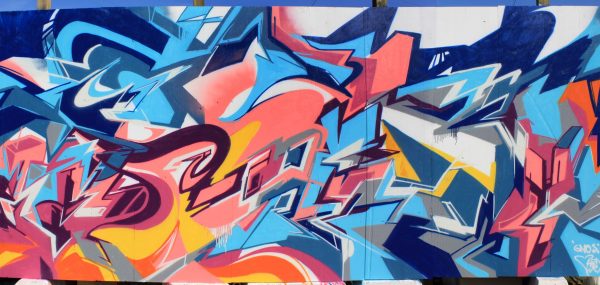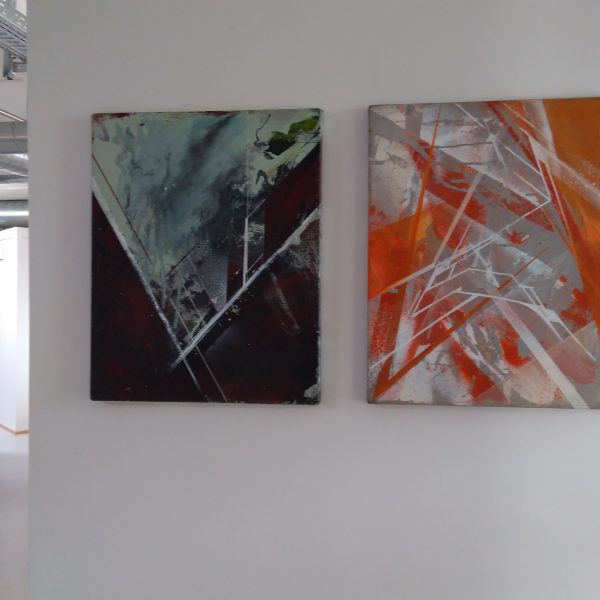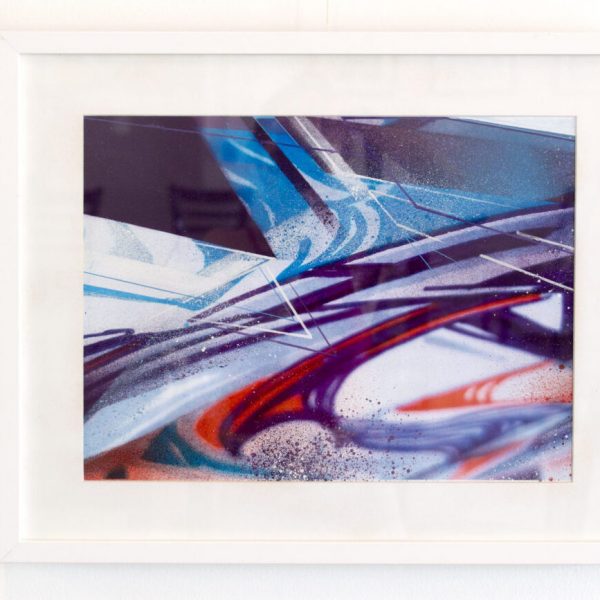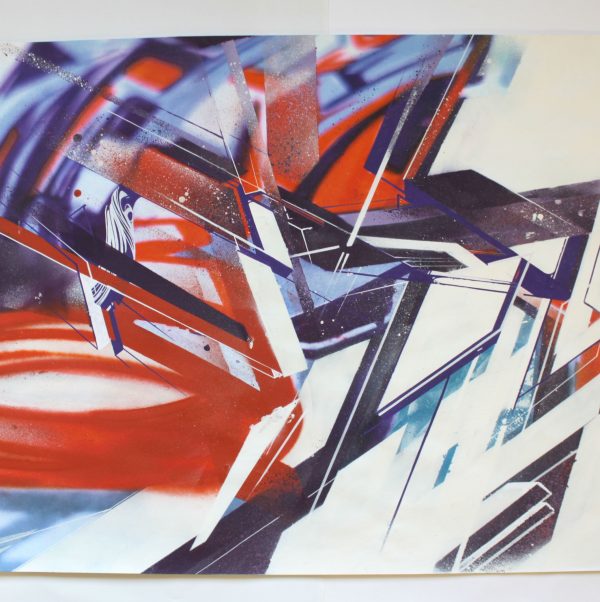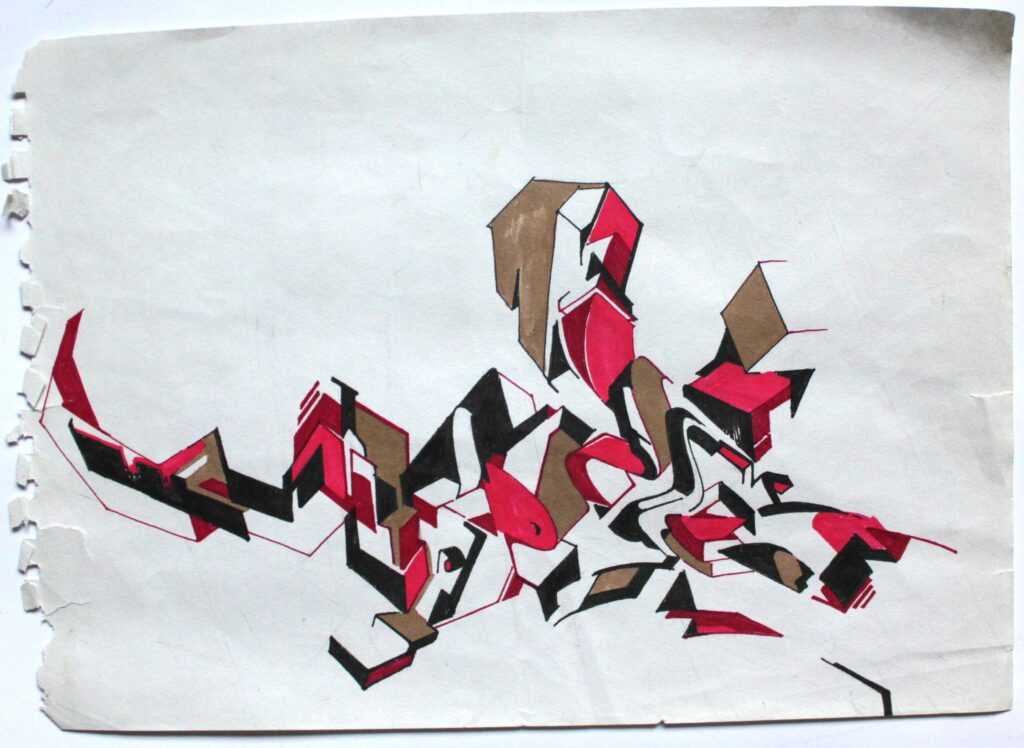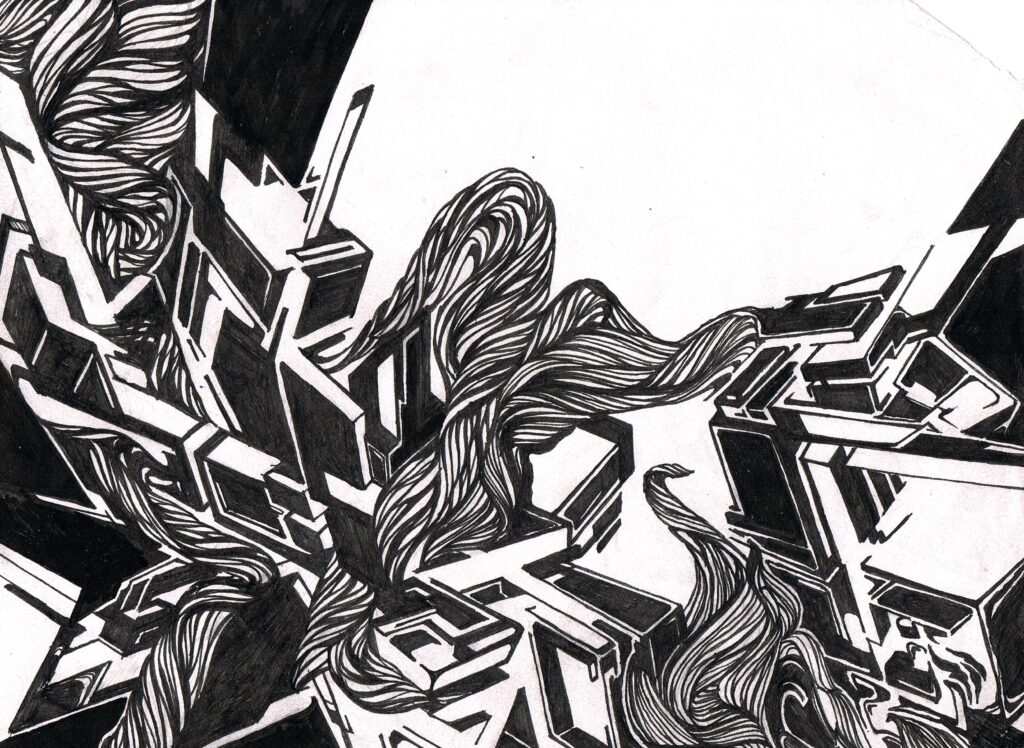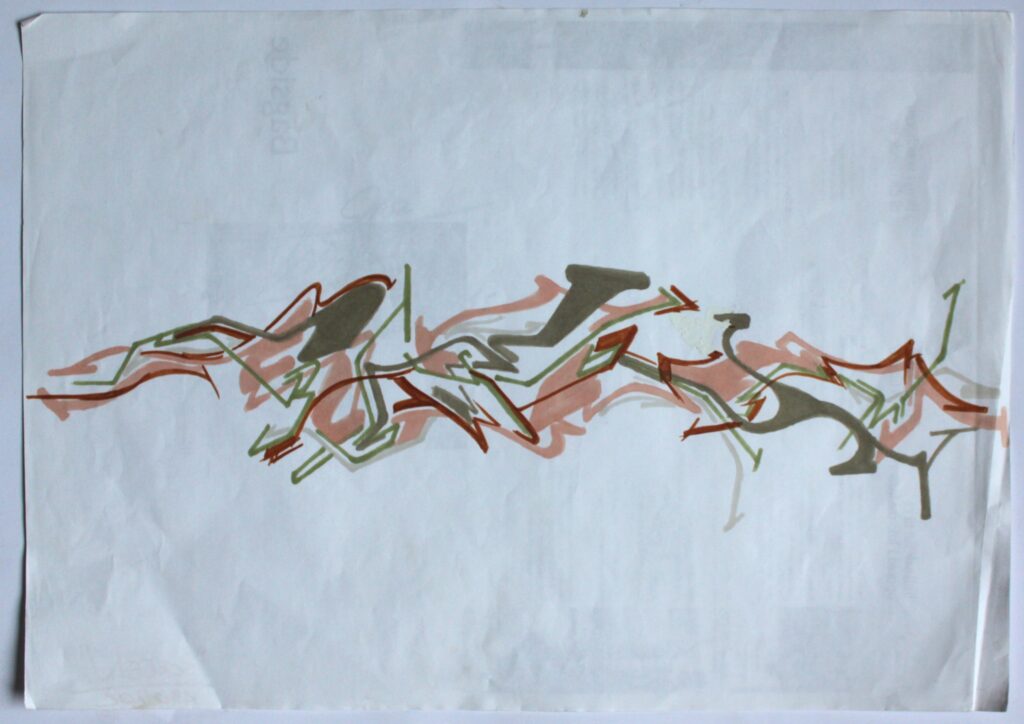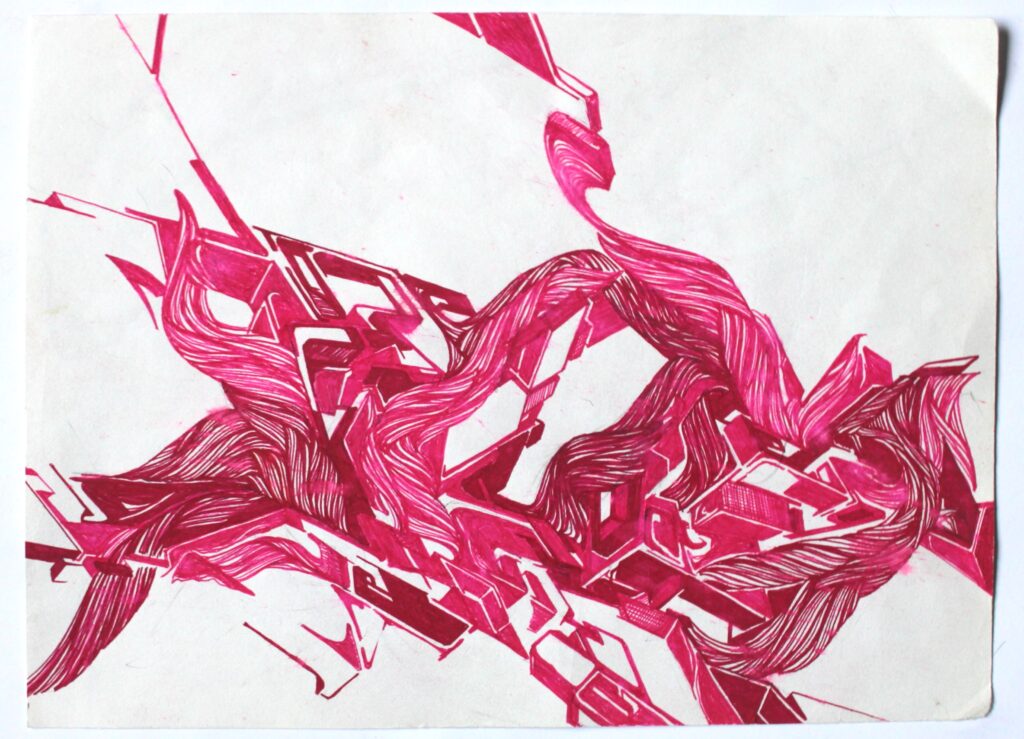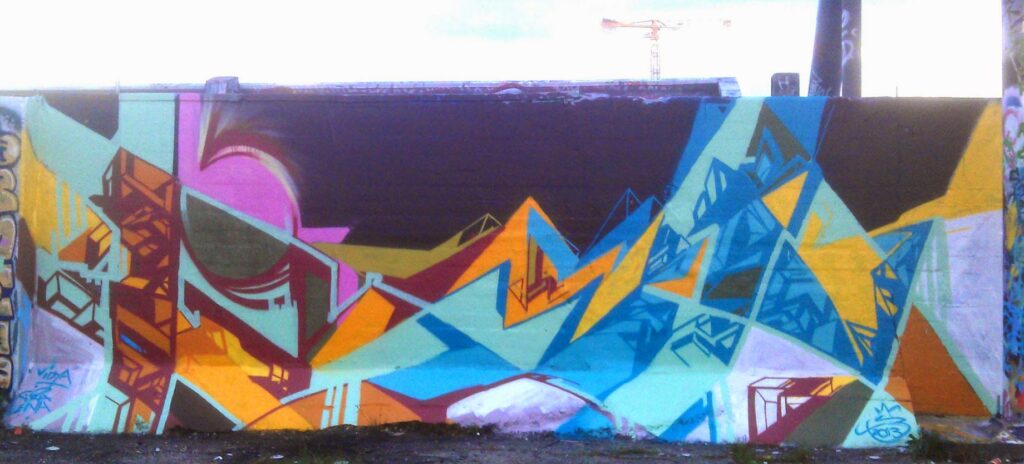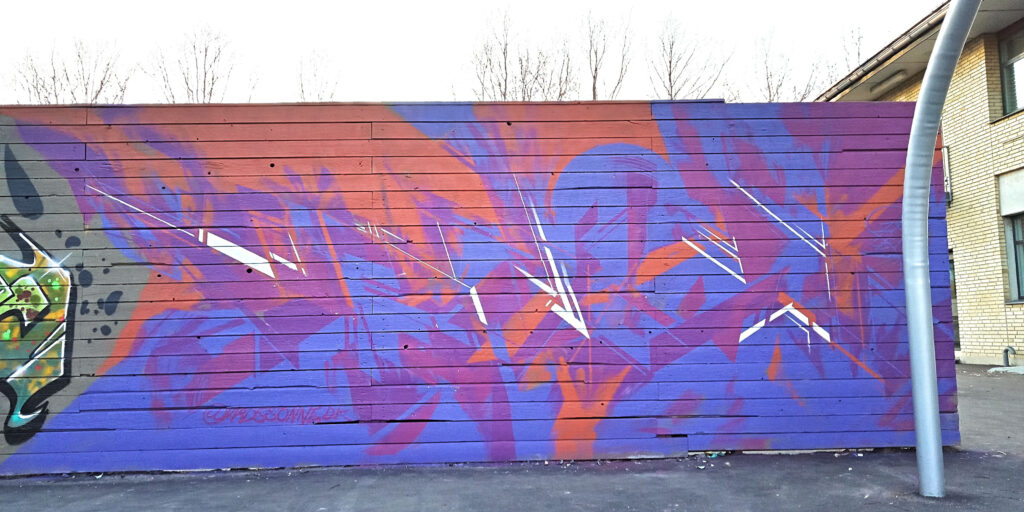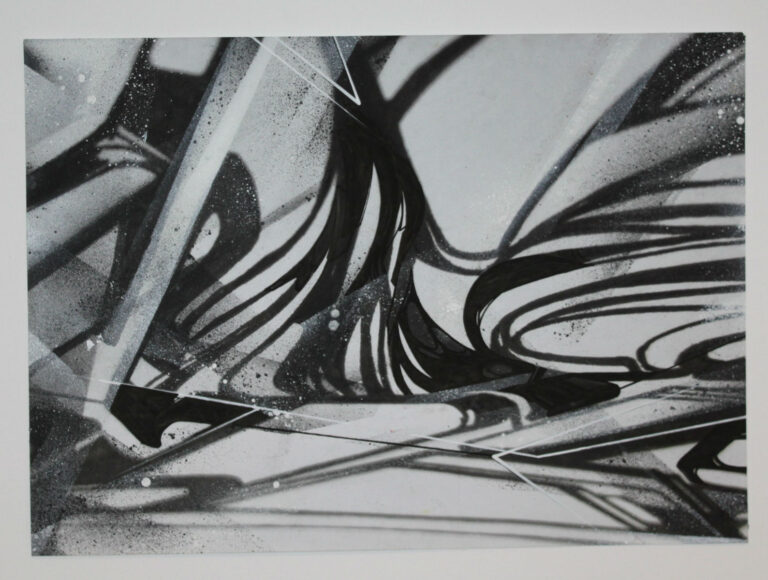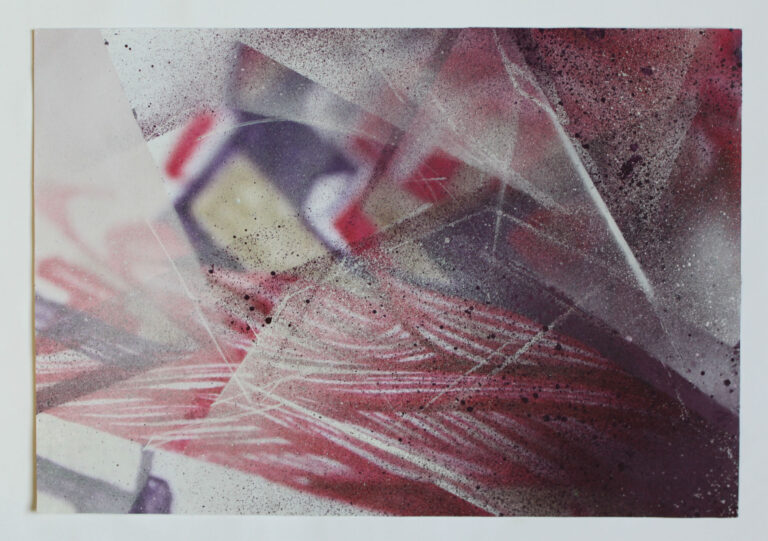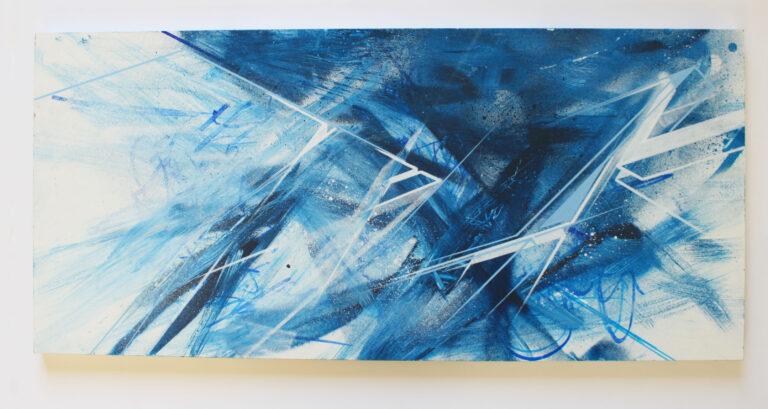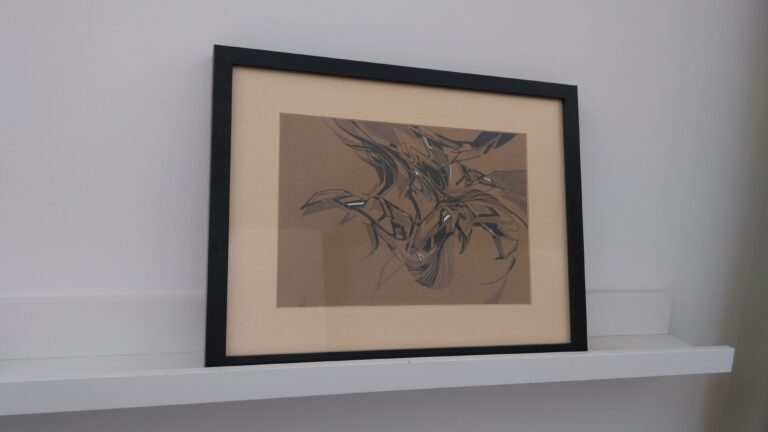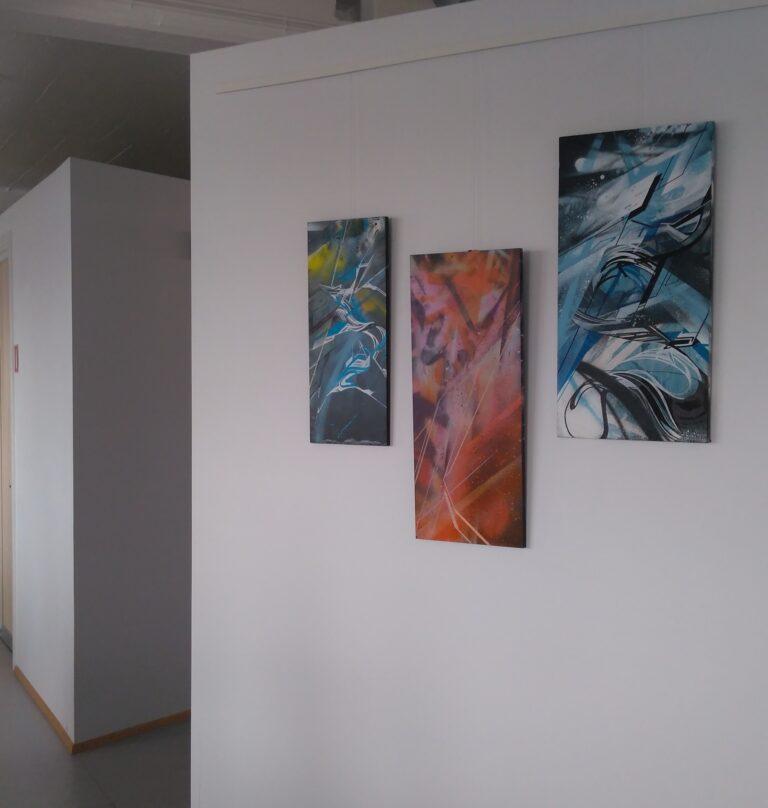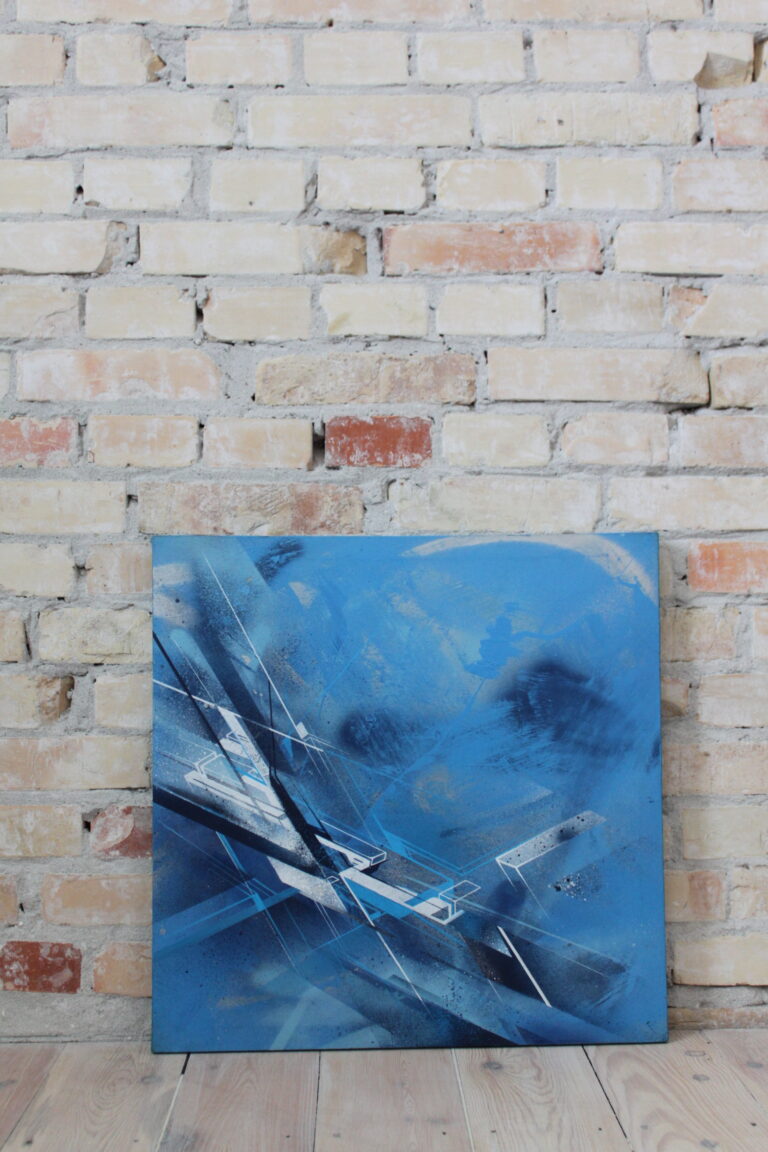GRAFFITI/50 ANS D´ INTERACTIONS URBAINES</h3
I was personally invited by Lokiss, a French graffiti pioneer, and I am humbled to part of the book, where my words and works are featured alongside artists such as DAIM, PEETA, MAD C, BATES, SAT ONE, ASH, LEK and other well known international artists.
The book also hints to where urban contemporary art is headed in the forms of sculpture, contextual paintings and muralism.
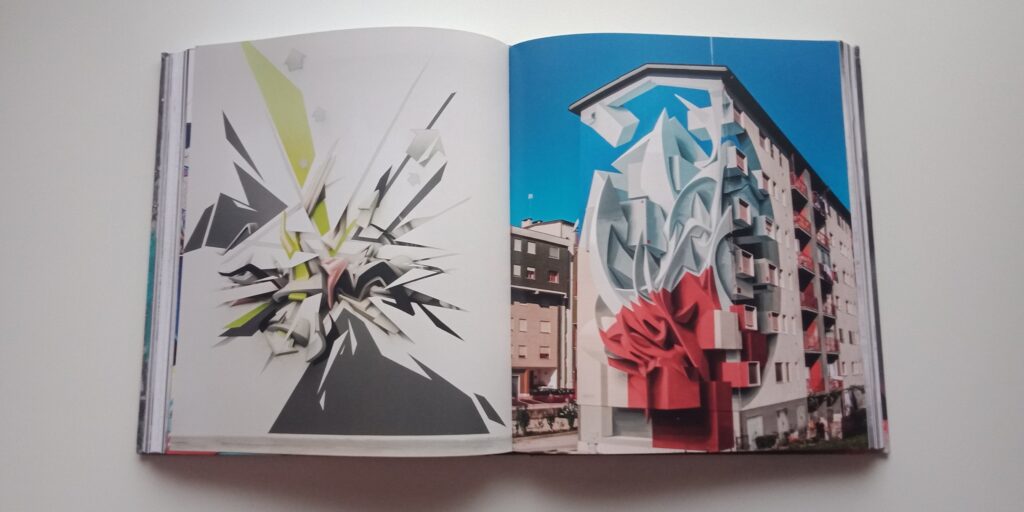
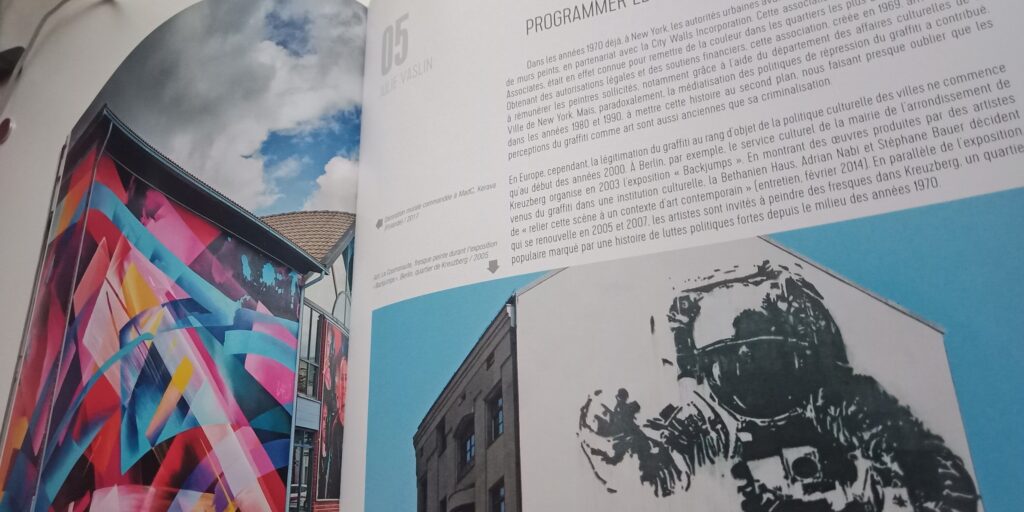
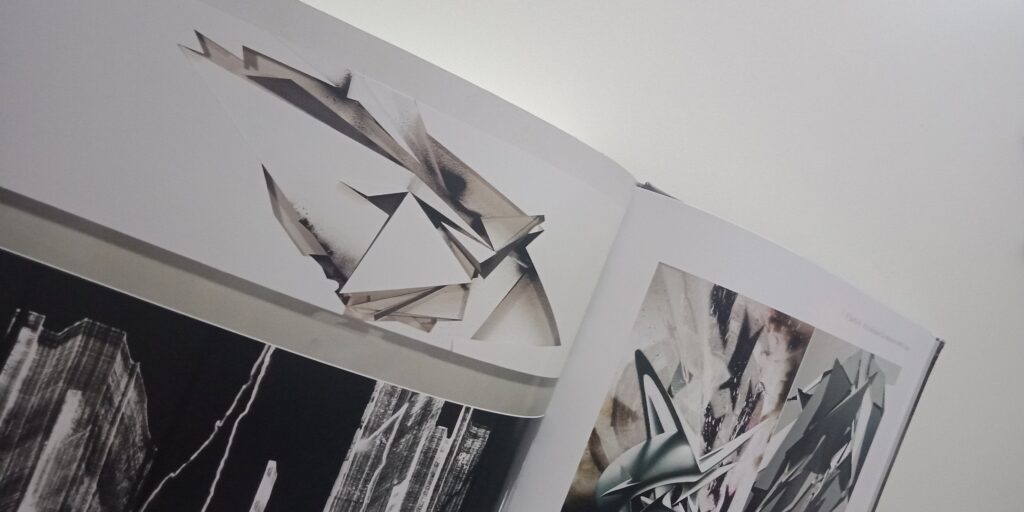
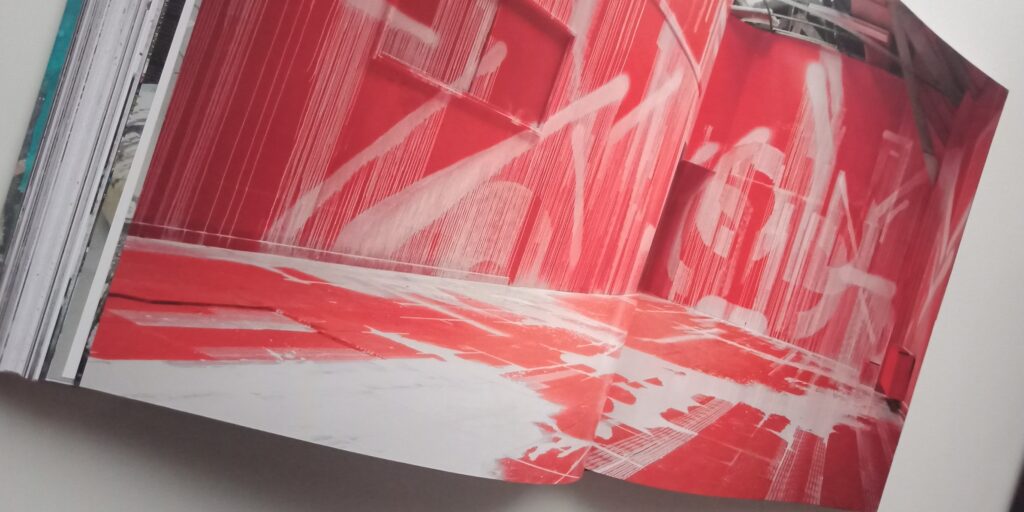
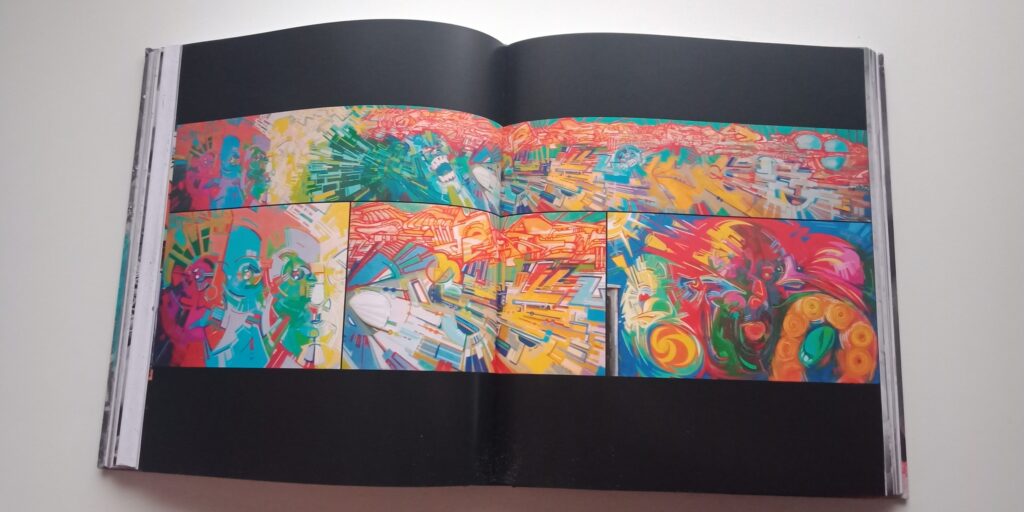
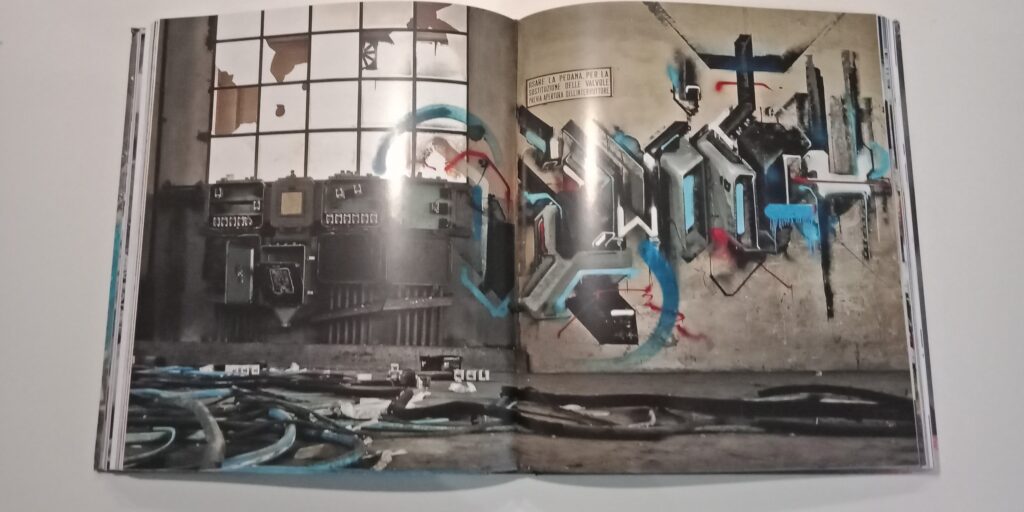
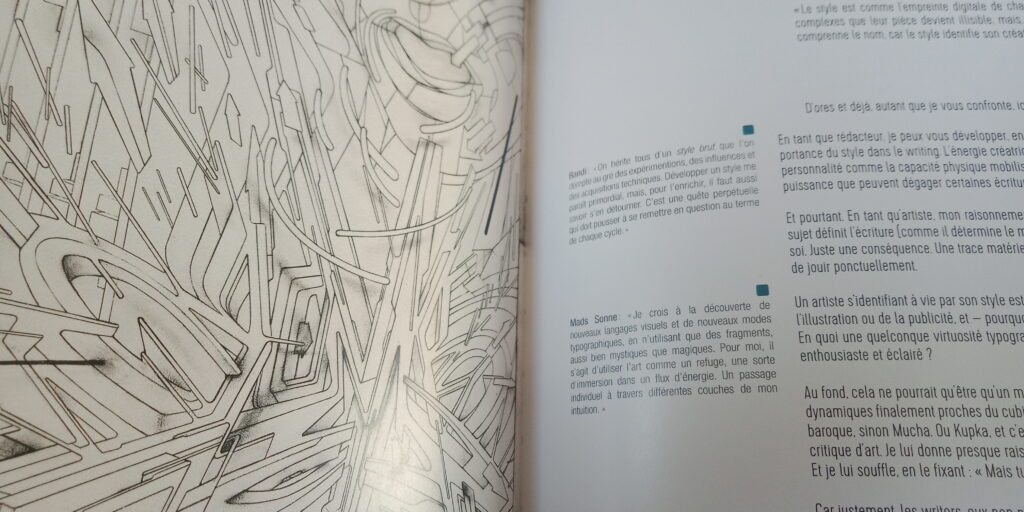
LINES OF WRITING
Lokiss wanted to have my opinion and view upon the influences, my methods and techniques, and submitted my replies to be featured in the book.
I got a quote and the wall painting above featured in the book, but below gives a more insight in how I started, what kept me going and how I see the development of the Style Writing evolve.
I have words and works in this book, which is a documentation of 50 years of urban interactions and the development of the urban art form and it features interviews and portraits of key founding fathers of graffiti, from whose styles and artwork, more abstract expressions emerged, and from whom I feel inspired from.
1. Can you tell me, in a few lines, your own ‘History of Writing’ and how you have become a part of it?
I started doing letters in 1986 but had focused on letters, dynamics, negative spaces and the structural and “bare bones” elements of the letter. Having seen the movie StyleWars, reading the books SubwayArt + Spraycan Art book opened my world, and I definitely was struck by visions by artists who stood out and brought some new ideas on the table. I had the focus on investigating how much could be removed from the letterforms, which basic core elements made up the letter form.
I did a lot of drawings, and considered them as finished works; not intended to wind up upon walls or trains. I did not venture into conceptual visual work, characters, background but wanted to strengthen the understanding of letters.
After 10 years of drawing, I picked up a spray can and did a handful of pieces. It quickly became clear, that I wanted to do legal wall spaces, where I could immerse myself in the flow of creating the piece, without having to get the “kick” out of looking over one’s shoulder.
For the past decades, I have through social sharing media, been exposed to the popularity and acceptance and/or public demand for work in similar veins as mine. Seeing the “style” flourishing and blossoming up upon walls, interior spaces, galleries, murals, posters, graphic prints etc, so it encourages me and motivates me to get up/getting out there and present my ideas, my take on graffiti culture in a more open and public manner.
2. Writing Culture has no manifesto, would you say it is a gap or a benefit?
It’s a huge benefit not be limited or confined to certain rules or dogmas for the artistic method and approach, but it’s up to the viewer how they perceive my productions, whether it’s according to the rules in the graffiti handbook, whether it looks aged, or futuristic.
I am the producer of the art, but the opinions about belong to and are solely in the hands and minds of the viewer. Myself, I have an open and freer approach to further develop one’s self-expression, steadily living, observing and moving along the lines breathed into life on different mediums and surfaces.
3. Do you feel close the gothic futurism created by Rammellzee? iif not, did you perceive any philosophy emerging from the graffiti culture?
What I saw in the works of somebody like Ramellzee of the gothic futurism, was out of the box- thinking and an alternative and deconstructing the concept of how graffiti should be like. What remains as an echo of his philosophy, is that he pictured the letters as soldiers (or maybe as weapons?).
For me, letters and the alphabet are merely “individual tones” put together as a string and making a composition or melody. My output; letter based visual communication is essential a metaphor in the truest sense as in word equals worlds. Letters, in my understanding, carry energy within and therefore, as all entities in the universe, has a destructive as constructive energy, and when put together they make “worlds” or universes to explore or dive into.
4. “Styles War”, is competition still the core of your practice? If yes, do you keep this energy once you are in your studio?
I am battling my own imperfection, as in art is an externalization of one’s feelings, emotions, ideas and visions, energy follows thought.
I believe in discovering new lands, new visual languages and new ways of turning letters upside down, doing only fragments of them, half-covered in mystic and magic. For me its a matter of using the art as a safe haven, but also as a therapeutic means to calm down, to immerse oneself in the flow of energy, getting through the layers, and then getting the first lines down.
The process is joyful but is also a process of trial and errors leaving spots of elegance, magic, fulfilment and failure in the details. Learning to trust the intuitive flow of lines. The work is done, when I can not add nor remove any lines, as the work, the externalized feeling or sense, rests in this tranquil state.
5. Is graffiti political? or the individual or at a larger scale? how and why?
Some areas or countries has still a very active illegal scene and its a constant reminder that some members of the society are beyond the political system and manifests their voice regardless of what’s allowed and not allowed. In its “original form,” it constitutes an anti-establishment approach because it represents an anti-conformity and an alternative lifestyle, beyond the law.
Recently the world has observed the power of graffiti as a conveyor of messages, which caused revolution and uproar in countries like Syria, Egypt etc, but on a more personal level, it’s up to the individual about what goals or motifs, what drives her/him, when create to express one’s opinion.
6. Can you relate to a specific style? Which one and why? Developing your own style is a strong goal, or finally, a creative dead end (as ‘branding’ yourself)
The style or the methodology is originating from graffiti with its aesthetics and elements, but I am seeking and exploring the world of letters, so I freely can twist and turn the letters upside down, sideways, intensify key points of the letter and the structure, and maybe only drawing half of the letter or dissolve the letter shapes completely or repeat the same letter numerous times on the same illustration.
There’s only the rules, you put upon yourself. My approach is not to repeat and writing my graf-name over and over again, but be flexible and make the words=worlds, I want to convey recognizably, but yet abstract forms, so within the lines, the areas of dynamics, the observer sees or imagines entities which resemble characters or narratives.
I believe that is so much more to be explored and investigated using graffiti or writer culture as a platform or a starting point, whether it’s presented as graphic design, abstract lettering or letter based visual art.
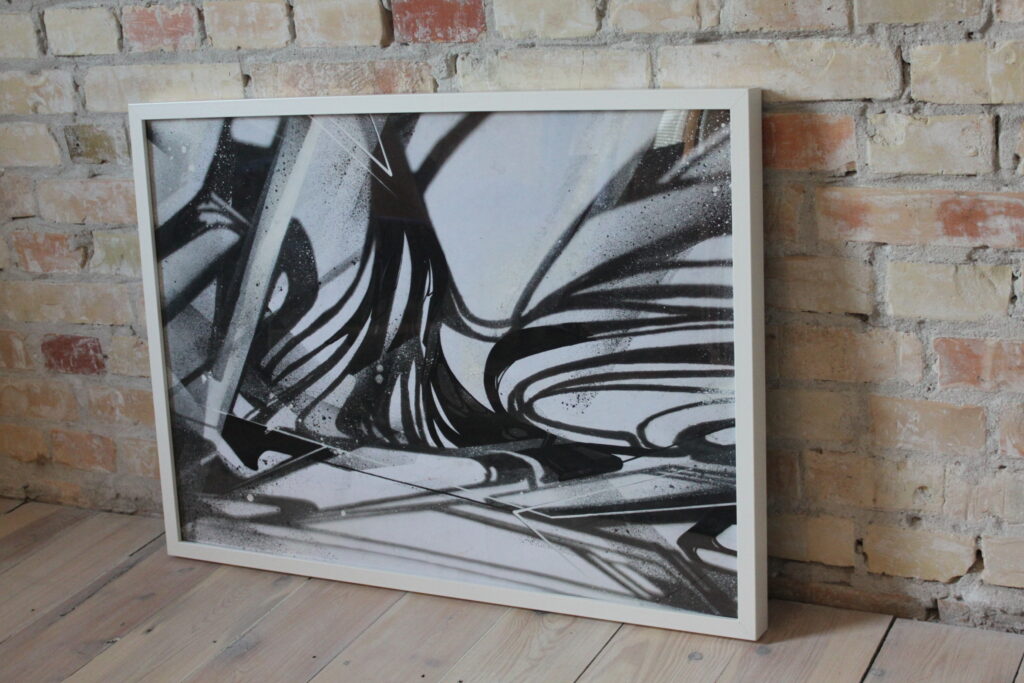
7. Have you created your own technics, what was the aim of that? How does the context influence on the medium’s fulfilment? Is writing limited to aerosol or do you mix it with other mediums or objects?
My technique is often a mix of mediums in a way to unfold the narrative of different platforms and different media. Why should try to paint effects, that’s easier obtained using the camera? Why should I do brush strokes splatters, when it’s easier to use aerosol? Why use masking tape, when its easier to use markers for thin lines?
I began to shoot macro shots of my work, print them large scale and hand embellish them with extended and enhanced linework. Dots and effects from spraypaint, joining and expanding the printed and static universe. The narrative continues and transforms into another medium. It had become a unique original, poster/canvas. There are a few different streams of my work, developing alongside each other and sometimes overlapping.
I would not say that the technique is “mine”, but having a conscious mind for recycling and upcycling older works, using bits and pieces in a new work, incorporating tags, handstyles, brushstrokes, spraypaint and what can contribute to the continuous breathe life into the work.
I make walls which I print. I make illustrations which I take pictures of. I use the pictures as a canvas and turn them into posters. I make canvas work which I photograph and made into illustrations. I make murals which I turn into a canvas, and a lot of people are asking why the signature is missing out in the lower right corner?
The works have been produced from an open perspective, where there is no predefined angle from which the work should be observed. Everyone has their own preference, and I would let the viewer choose from themselves and getting in tune with the work from the most inspiring angle. - often I turn the paper or canvas upside down during the process of making first lines – its a matter of which angle the observer would find the most interesting element and spark up the imagination.
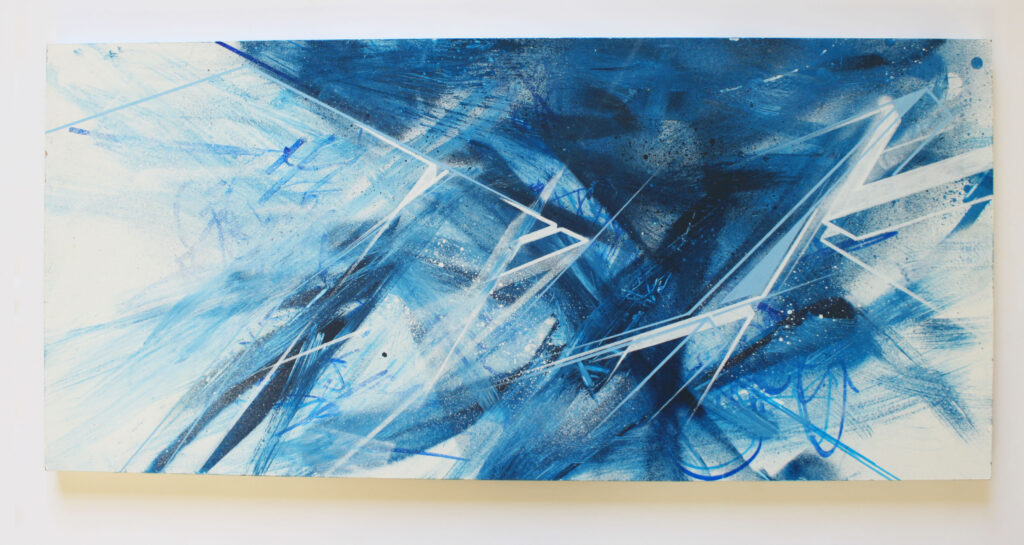
8. Do you include urbex or vandalism in your practice? If yes, please tell something about that people frequently link graffiti art and the art of installation, some kind of urban and art, do you agree with this idea?
If vandalism is considered tags, handstyles, graffiti letters then there are traces of those visible in my output I agree that post-graffiti or murals can be categorized and labelled as urban art, and Installation or contextual placement of the tags have great importance within the peers and represents parts of subworld/culture. It represents a counterculture and a subculture driven by passion.
9. what is your point of view on collaboration between artists and brands for advertisement or marketing? Is it a sad and nocive decay or an opportunity at the benefit of both parts?
There are numerous examples of former graffiti artists doing commercial work such as advertising, but as long the artist has the integrity to be associated with that brand or marketing campaign I can only see it a benefit for both parts. In my opinion, throughout history, the best works have been done as a commission. I believe that its an inevitable direction of merging or integrate art and corporations in one way or another. I am aware of cases, whereas the artwork, or “style” has been mass-produced, copied and without the permission or acknowledgement to the artists, but as long as the artists get proper credit or paid for it, the financial support can pave the way and make the artist continuously sharing his/her talent and vision and develop it even further.
10. Post-Graffiti being already a thing of the past, how do you fancy the future of Writing? Street art? video art? sculpture? Integration into contemporary art? A political tool of urban gentrification? or just the end?
I can see the future perspectives of applying writing culture or artistic expression in different mediums and formats such as VR, AR, 3D printing, drone painting or even as letter shapes as furniture or home decorations. Free to utilize any medium or format, that the artists see fit to communicate or explore his/her vision. There are no limitations, but only imagination. Energy follows the thought, which action manifests.
where can I get it?
Distribution and future editions
Presently there’s only one place you can obtain it and that’s from amazon.fr
If you are interested in future editions (perhaps an English edition?) and want to help to distribute this massive insight in graffiti in writing culture, then write me.
My learnings
Connecting those dots.
Having shared the awareness of the book, gathered comments and feedback, also made me process the realisation that I am featured in the book, is a proof, a sense of acceptance, that my output and what I considered my “passion project” is on level and valuable (enough) to be part of the art history.

